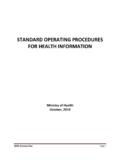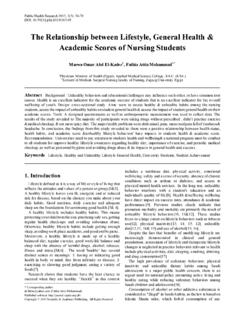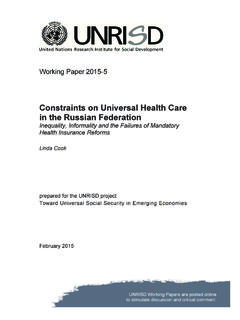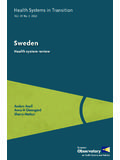Transcription of Estimated rates of recurrence, cure, and treatment ...
1 ISSN 1806-3713 2017 Sociedade Brasileira de Pneumologia e : To estimate the rates of recurrence, cure, and treatment abandonment in patients with pulmonary tuberculosis treated with a four-drug fixed-dose combination (FDC) regimen, as well as to evaluate possible associated factors. Methods: This was a retrospective observational study involving 208 patients with a confirmed diagnosis of pulmonary tuberculosis enrolled in the Hospital Tuberculosis Control Program at the Institute for Thoracic Diseases, located in the city of Rio de Janeiro, Brazil. Between January of 2007 and October of 2010, the patients were treated with the rifampin-isoniazid-pyrazinamide (RHZ) regimen, whereas, between November of 2010 and June of 2013, the patients were treated with the rifampin-isoniazid-pyrazinamide-ethambut ol FDC (RHZE/FDC) regimen.
2 Data regarding tuberculosis recurrence and mortality in the patients studied were retrieved from the Brazilian Case Registry Database and the Brazilian Mortality Database, respectively. The follow-up period comprised two years after treatment completion. Results: The rates of cure, treatment abandonment, and death were , , and , respectively. There were 7 cases of recurrence during the follow-up period. No significant differences in the recurrence rate were found between the RHZ and RHZE/FDC regimen groups (p = ). We identified no factors associated with the occurrence of recurrence; nor were there any statistically significant differences between the treatment groups regarding adverse effects or rates of cure, treatment abandonment, or death.
3 Conclusions: The adoption of the RHZE/FDC regimen produced no statistically significant differences in the rates of recurrence, cure, or treatment abandonment; nor did it have any effect on the occurrence of adverse effects, in comparison with the use of the RHZ : Tuberculosis, pulmonary, Drug combinations; rates of recurrence, cure, and treatment abandonment in patients with pulmonary tuberculosis treated with a four drug fixed dose combination regimen at a tertiary health care facility in the city of Rio de Janeiro, BrazilVangie Dias da Silva1, Fernanda Carvalho de Queiroz Mello2, Sonia Catarina de Abreu Figueiredo2 Correspondence to:Vangie Dias da Silva.
4 Rua Prof. Rodolpho Paulo Rocco, 255, Pr dio do HUCFF, 1 andar, sala 01D58, Cidade Universit ria, CEP 21941-913, Rio de Janeiro, RJ, : 55 21 3938-2887. E-mail: and support: remains a serious global public health prob-lem and is one of the leading causes of death in the world, according to data from the World health Organization. Brazil is one of the 22 countries that collectively account for of all cases of pulmonary tuberculosis worldwide, ranking 18th. In 2014, the tuberculosis incidence rate in Brazil was 44 cases per 100,000 population, with a rate of tuberculosis/HIV coinfection of 17%.
5 The mortality rate from tuberculosis/HIV was cases per 100,000 population.(1) The state of Rio de Janeiro has one of the highest tuberculosis incidence rates in the country ( cases/100,000 population), second only to the state of Amazonas, as well as having the highest mortality rate from tuberculosis in the country ( cases/100,000 population) and a rate of tuberculosis/HIV coinfection of (2) Tuberculosis is related to poverty, malnutrition, and social exclusion,(3) predominating in men aged 45 to 59 years.(3,4)Since 1994, the World health Organization and the International Union against Tuberculosis and Lung Diseases have recommended the use of fixed-dose combinations (FDCs), proposing the change in previous treatments with the justification that treatment adherence would be better and selection of drug-resistant mutant bacilli would be reduced,(4-8) which would translate to higher cure rates and lower rates of treatment abandonment, recurrence, and the basis of data from the Second National Survey on Antituberculosis Drug Resistance (2007-2008),(4,9)
6 Which showed an increase in primary resistance to isoniazid (from to 6%) and rifampin (from to ) between 1997 and 2007, the Brazilian National Tuberculosis Control Program/Ministry of health decided, 1. Programa de P s-Gradua o, Universidade Federal do Rio de Janeiro, Rio de Janeiro (RJ) Faculdade de Medicina, Universidade Federal do Rio de Janeiro, Rio de Janeiro (RJ) : 8 July : 31 October carried out at Hospital Universit rio Clementino Fraga Filho HUCFF Instituto de Doen as do T rax IDT Universidade Federal do Rio de Janeiro, Rio de Janeiro (RJ) Bras Pneumol.
7 2017;43(2):113-120113 ORIGINAL ARTICLEE stimated rates of recurrence, cure, and treatment abandonment in patients with pulmonary tuberculosis treated with a four-drug fixed-dose combination regimen at a tertiary health care facility in the city of Rio de Janeiro, Brazilin 2009, to change the regimen used, which had been in use since 1979. The regimen that had been used until then, known as regimen I 2 months of rifampin, isoniazid, and pyrazinamide (RHZ), followed by 4 months of rifampin and isoniazid (RH) was changed by adding a fourth drug, ethambutol, to the (2-month) intensive phase of treatment , the new regimen being designated 2 RHZE/4RH.
8 In the 2-month intensive phase of treatment , capsules were replaced by FDC tablets containing RHZE (RHZE/FDC), whereas, in the 4-month continuation phase of treatment , FDC capsules containing RH were used. In adults, the doses of isoniazid and pyrazinamide were adjusted to 300 mg/day and 1,600 mg/day, respectively.(4,9)The objective of the present study was to determine the rate of recurrence of pulmonary tuberculosis with the use of the RHZE/FDC regimen, in comparison with the use of regimen I (RHZ), and to identify possible risk factors leading to recurrence, in addition to determining the rates of cure, treatment abandonment, and death, as well as the occurrence of adverse was a retrospective observational study con-ducted between January of 2007 and June of 2013 at the Instituto de Doen as do T rax (IDT, Institute for Thoracic Diseases)
9 Of Hospital Universit rio Clementino Fraga Filho (HUCFF, Clementino Fraga Filho University Hospital), which is a tertiary hospital complex affiliated with the Federal University of Rio de Janeiro and is located in the north area of the city of Rio de Janeiro, Brazil. The hospital is a referral center for the treatment of patients with HIV/AIDS, patients with diseases requiring complex treatment , such as transplantation, patients with autoimmune diseases, cancer patients, and patients with diabetes mellitus; therefore, comorbidities are common. The study was approved by the HUCFF/IDT Research Ethics Committee in November of 2013 (Protocol no.)
10 At the HUCFF/IDT, there is the Programa de Controle da Tuberculose Hospitalar (PCTH, Hospital Tuberculosis Control Program), which was established in 1998. The program includes active surveillance for tuberculosis in inpatients, outpatient treatment for patients suspected of having tuberculosis, isolation of patients with suspected or confirmed pulmonary tuberculosis, routine sputum smear microscopy and mycobacterial culture, prompt availability of laboratory results, and continuing education of health care professionals. It is a multidisciplinary integrated care program, and all enrolled patients are followed for 2 years after treatment completion.














